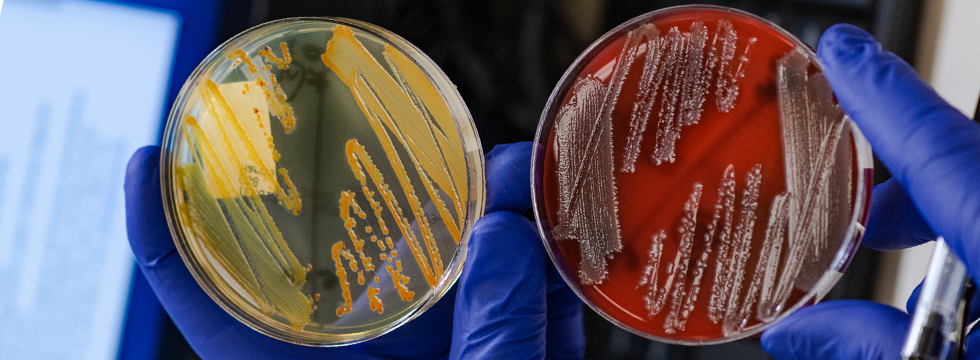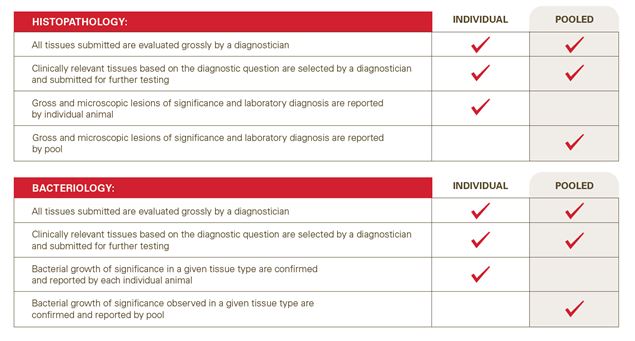
Date: February 1, 2023
Updating Fees & Opportunities to Save on Production Animal Necropsy Submissions
Due to inflationary pressures, the ISU VDL will be updating histopathology fees and the fee structure on requests for “individual” histopathology and bacteriology testing among multiple animals of a common age, group, or lot on necropsy (tissue based) diagnostic submissions, effective February 15, 2023.
The costs incurred in providing histopathologic and bacteriology examinations on necropsy (tissue-based) submissions far exceed testing fees assessed. Although the resources required to conduct “individual vs pooled” histopathology and bacteriology examinations on necropsy submissions can vary substantively, the testing fees assessed have not historically been different. Ongoing efforts to improve the efficiencies of the diagnostic process and better align testing fees with the expenses incurred are needed to support the sustainability of services provided.
With the changes of time and submission practices, the laboratory has noticed an increase in the number of production animal necropsy submissions consisting of multiple animals of a common age, group, or lot that include requests for individual testing by histopathology and bacteriology, while pooling samples for PCR.
While there are use cases where specific individual animal histopathology and bacteriology test results are needed and have actionable diagnostic value, there are many food-animal necropsy (tissue based) case submissions where animals are selected as a proxy for the population of origin, and specific individual animal results do not affect the overall interpretative value of the submission.
When “Diagnostic Discretion” is indicated on the submission form, ISU VDL’s diagnostic pathologists have long “pooled” histopathology, bacteriology, and molecular test requests among animals of a common age, group, or lot within a given diagnostic case submission as standard practice.
In efforts to help mitigate cost impacts realized by VDL clientele and optimize the value of services delivered, we are providing an explanation of the principal intended use cases and differences between “individual vs pooled” histopathology and bacteriology test requests on production animal necropsy (tissue-based) submissions for your reference.
The principal intended use cases of requesting “individual vs pooled” histopathology and/or bacteriology on necropsy (tissue-based) submissions is outlined below:
Individual = When differentiating or tracing back notable findings and laboratory diagnosis to each individual animal within the group of animals of a common age, group, or lot is needed.
Pooled = When a summary of notable findings and laboratory diagnosis for animals of a common age, group, or lot is needed.
Figure 1. Illustrating the differences between “individual vs pooled” histopathology and bacteriology test requests on necropsy submissions of multiple animals of a common age, group, or lot.
Take Home Messages:
As submission specific use cases allow, “pooled” test requests among animals of a common age on necropsy (tissue based) submissions provide for the most efficient and cost-effective means for deriving herd, lot, or group level laboratory diagnosis.
When submitting tissue samples from multiple animals of a common age, group, or lot to the laboratory, “pooled” histopathology and bacteriology test requests will present an opportunity to conserve resources and commonly save $50 or more per multi-animal necropsy case submission going forward.
ISU VDL works diligently to continuously seek out opportunities to improve efficiencies and the value of the diagnostic services delivered. We hope the above explanation concerning “individual vs pooled” histopathology and bacteriology test requests on necropsy (tissue-based) submissions containing multiple animals of a common age, lot, or group is helpful.
Please don’t hesitate to contact the laboratory with any questions.
Summary of principal histopathology and bacteriology fees being updated, effective February 15, 2023:
- Histopathology slide preparation fee is increasing from $7 to $10 per slide.
- Baseline diagnostic pathology interpretation fee is increasing from $30 to $35 per case.
- When individual histopathology and bacteriology test requests are made on necropsy (tissue based) diagnostic submissions containing multiple animals of a common age, group, or lot:
- Diagnostic pathology interpretation fee will double ($35 to $70)
- The fee for each additional tissue cultured after the first tissue is increasing from $7.50 to $10.00

